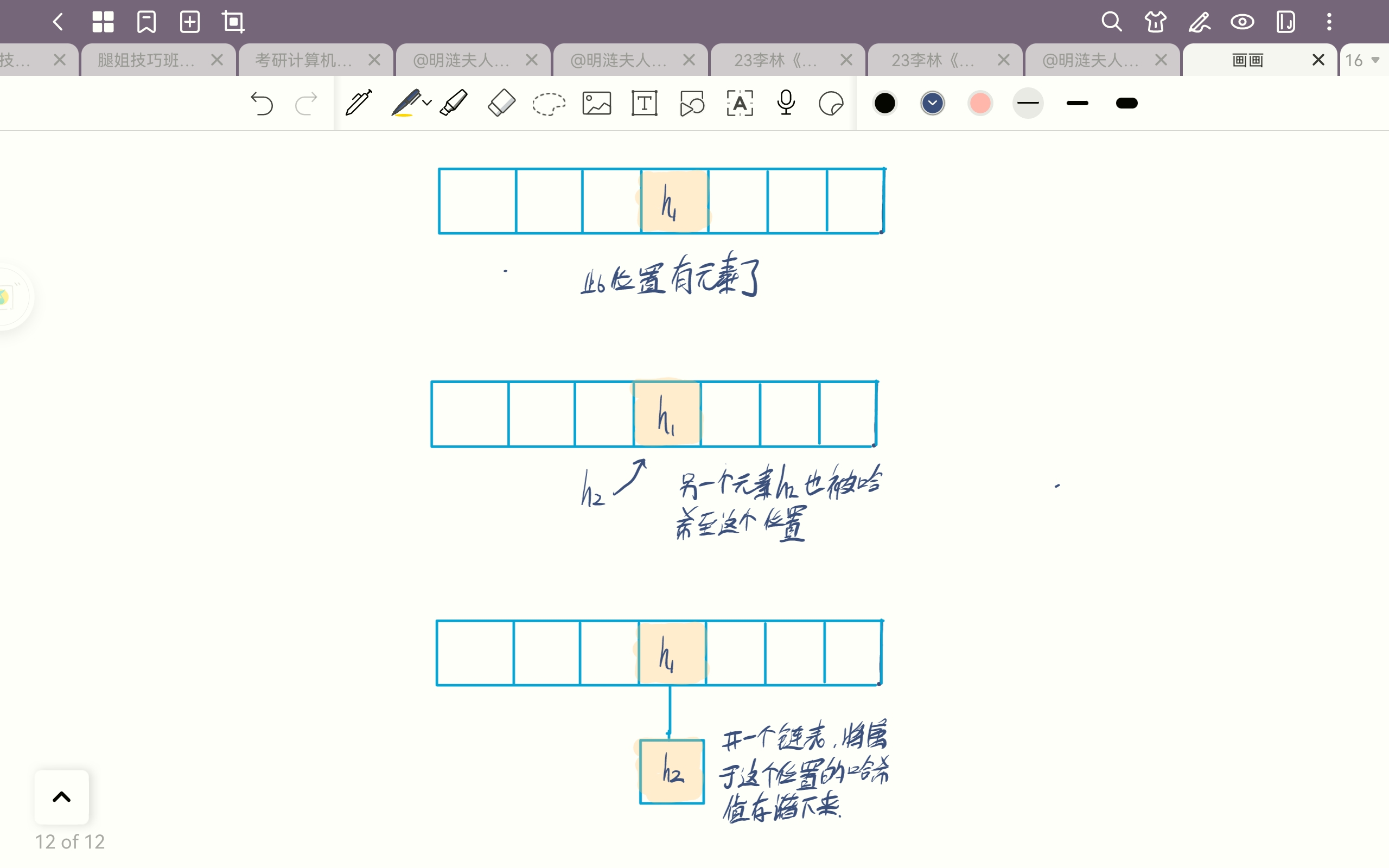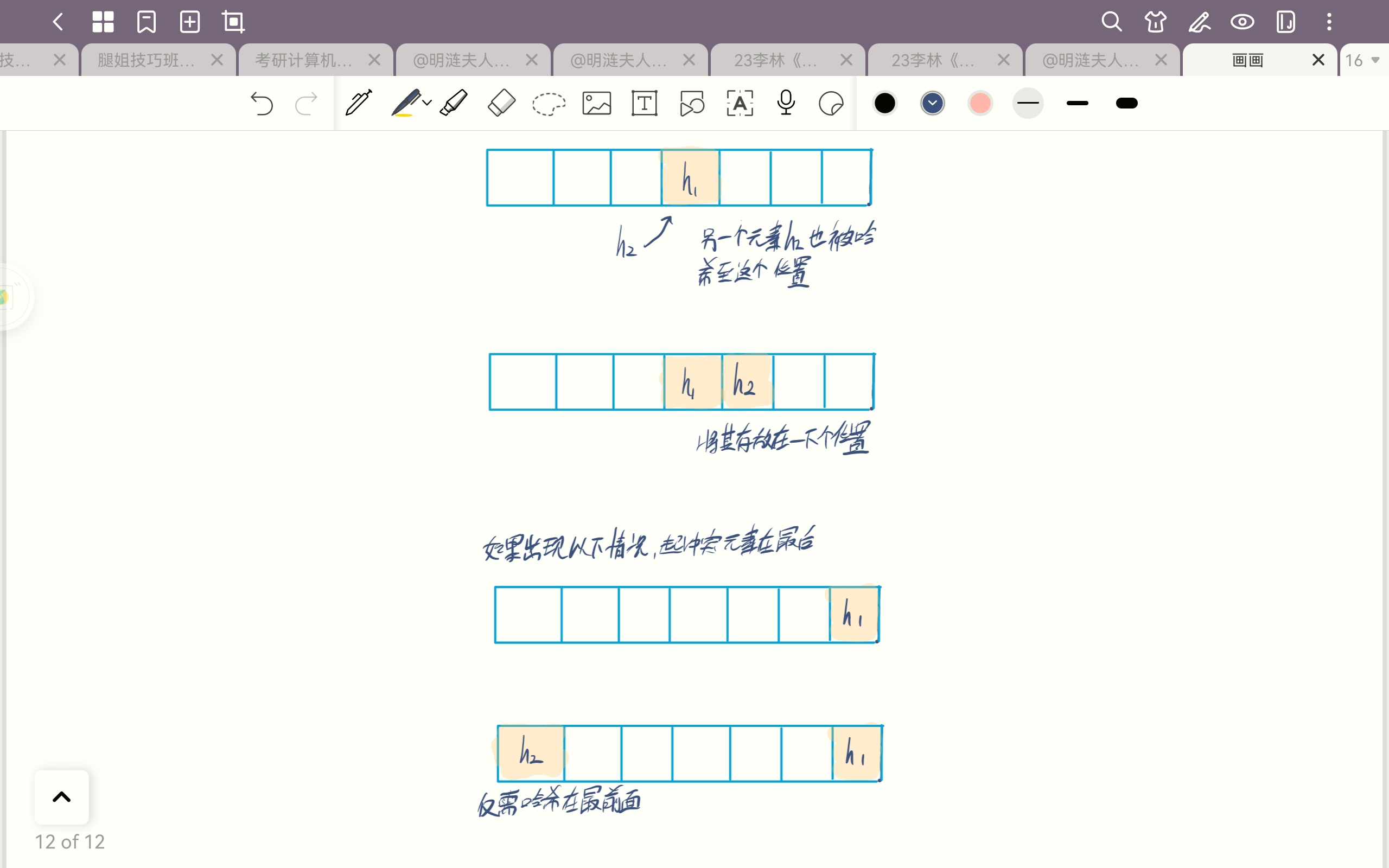840.模拟散列表
维护一个集合,支持如下几种操作:
I x,插入一个数 $x$;Q x,询问数 $x$ 是否在集合中出现过;
现在要进行 $N$ 次操作,对于每个询问操作输出对应的结果。
输入格式
第一行包含整数 $N$,表示操作数量。
接下来 $N$ 行,每行包含一个操作指令,操作指令为 I x,Q x 中的一种。
输出格式
对于每个询问指令 Q x,输出一个询问结果,如果 $x$ 在集合中出现过,则输出 Yes,否则输出 No。
每个结果占一行。
数据范围
$1 \le N \le 10^5$
$-10^9 \le x \le 10^9$
输入样例:
5
I 1
I 2
I 3
Q 2
Q 5
输出样例:
Yes
No
开散列方法(拉链法)
核心:如果一个位置有多个重复映射到此处的元素,就开一个链表,将所有元素都存储下来。

$Code$:
1
2
3
4
5
6
7
8
9
10
11
12
13
14
15
16
17
18
19
20
21
22
23
24
25
26
27
28
29
30
31
32
33
34
35
36
37
38
39
40
41
42
43
44
45
46
47
48
49
50
51
52
53
54
55
56
57
58
59
60
61
62
63
64
| #include <iostream>
#include <cstdio>
#include <cstring>
#include <algorithm>
using namespace std;
const int N = 200003;
int h[N], e[N], ne[N], idx;
int n;
bool find(int x)
{
int t = (x % N + N) % N;
for(int i = h[t]; i != -1; i = ne[i])
if(e[i] == x) return true;
return false;
}
void add(int a, int b)
{
e[idx] = b, ne[idx] = h[a], h[a] = idx ++ ;
}
void insert(int x)
{
if(find(x)) return;
int t = (x % N + N) % N;
add(t, x);
}
int main()
{
scanf("%d", &n);
memset(h, -1, sizeof h);
while(n -- )
{
char op[2];
int x;
scanf("%s%d", op, &x);
if(op[0] == 'I') insert(x);
else
{
if(find(x)) puts("Yes");
else puts("No");
}
}
return 0;
}
|
闭散列方法(开放寻址法)
核心:如果映射到某个位置$A$的时候,此位置$A$已经存在元素,则映射到它下一个位置$B$,如果下一个位置$B$还是存在元素,则映射到$B$的下一个的位置。(ps:如果映射到最后一个位置$N-1$,并且该位置已经存在元素,则映射到开头的位置$0$)

1
2
3
4
5
6
7
8
9
10
11
12
13
14
15
16
17
18
19
20
21
22
23
24
25
26
27
28
29
30
31
32
33
34
35
36
37
38
39
40
41
42
43
44
45
46
47
| #include <iostream>
#include <cstring>
#include <cstdio>
#include <algorithm>
using namespace std;
const int N = 200003, null = 0x3f3f3f3f;
int n;
int h[N];
int find(int x)
{
int t = (x % N + N) % N;
while(h[t] != null && h[t] != x)
t = (t + 1) % N;
return t;
}
int main()
{
scanf("%d", &n);
memset(h, 0x3f, sizeof h);
while(n -- )
{
char op[2];
int x;
scanf("%s%d", op, &x);
if(op[0] == 'I') h[find(x)] = x;
else
{
if(h[find(x)] != x) puts("No");
else puts("Yes");
}
}
return 0;
}
|











